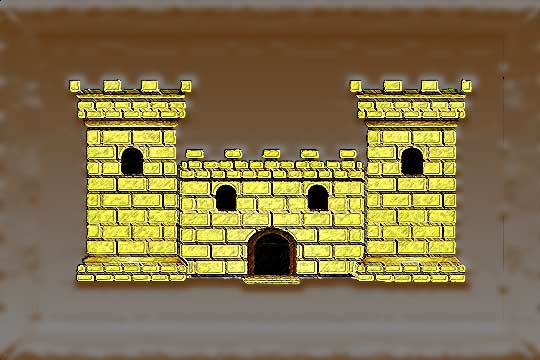Kalamata, Kalamata, Messenia,Peloponnese
Castle of Kalamata
| Location: |
| Kalamata, Peloponnese |
| Region > Prefecture: |  |
| Peloponnese Messenia | |
| Municipality > Town: | |
| City of Kalamata • Kalamata | |
| Altitude: | |
|
Elevation ≈ 70 m (Relative Height≈70 m) |
| Time of Construction | Origin | |
| beginning 13th cent. | FRANKISH |
|
| Castle Type | Condition | |
| Castle |
Not Good
|
A castle with a rich history on a rocky hill at the NW side of the city of Kalamata.
An ancient acropolis existed on the hill before the Trojan war, and later a Byzantine fortress, but the ruins we observe today are the remains of the castle that was (re)built there in the beginning of the 13th century, during the Frankish occupation.
The Name of the Castle
In the 6th century AD., a church was built in the castle devoted to Virgin Mary. An icon of Virgin Mary in the church became famous as 'Kalomata' (meaning 'beautiful eyes'). This later evolved to 'Kalamata' which became the name of the church, the castle and the city.
History
The ancient acropolis on the rock was founded by the figure of mythology Faris from Argos The city was named Farai or Fares and is mentioned in Iliad as one of the seven cities that Agamemnon offered to Achilles to ease his anger.
Fares never became an important city in the ancient world unlike other neighboring cities such as Messini. Archaeological excavations have proved that the city was on the hill and not in the surrounding area.
In early and middle Byzantine periods the place was inhabited and, certainly, fortified, but nothing more is known about its history.
The growth started with the Frankish occupation. After the 4th Crusade and the Fall of Constantinople, Peloponnese and Kalamata was conquered by Frank knights. When Geoffroi de Villehardouin I became the ruler of the Principality of Achaea (1205-1218), he rebuilt the ruined castle and made it the seat of the Barony of Kalamata. His son Guillaume II de Villehardouin who later became the most notable ruler of the Principality (1246-1278) was born in the castle of Kalamata.
The Franks held Kalamata until 1410 when the city became part of the Byzantine Despotate of Mystras. Before that, it was captured briefly by a band of Slav peasants in 1293 and by the Turks in 1396. From 1381 the area was under the control of the knights of the Company of Navarra.
In 1460 the castle and the city were captured by the Ottoman Turks under the leadership of Mohamed the Conqueror.
In 1463 the castle was taken by the Venetians. The Turks recaptured it in 1481 and thus began the Tourkokratia for Kalamata.
The Venetians came back in 1685 under general Morozini. The Turks were unable to defend the castle against the Venetian artillery and evacuated it after destroying it. This time, the Venetians made some major repairs and additions to the castle. In 1715 the Turks came back.
During the 18th century, although the city of Kalamata expanded, the castle was gradually abandoned and ruined.
Kalamata was liberated in 23 March 1821, in the first act of the Greek War of Independence.
Structure, Fortification & Buildings
The castle occupies an area of approximately 13,000 sq.m. within a fortified enclosure with a perimeter of 500 meters.
The relatively large size indicates that it was not a simple fortress, but a small castle town that at one time also included residences.
| First entry in Kastrologos: | July 2012 |
| Last update of info and text: | November 2024 |
| Last addition of photo/video: | April 2023 |
Sources
- WEbsite ΟΔΥΣΣΕΥΣ - Greek Ministry of Culture- Κάστρο Καλαμάτας (Greek only)
- Website Messinia -Κάστρο Καλαμάτας (Greek only)
- Pictures from Panoramio by the user Burgenfuzzi
- pictures by Ms. Jennifer Jones
- Video by the user Panagiotis Roubis Κάστρο Καλαμάτας
- Antoine Bon, 1969, La Morée franque. Recherches historiques, topographiques et archéologiques sur la principauté d'Achaïe (1205-1430), Editions de Boccard, pp.62-63, 87, 104, 121, 144, 152, 156, 167, 168, 171, 183, 191, 195, 216, 220, 276, 279, 285, 407-410, 419, 427, 666-668
|
|
| Access |
|---|
| Approach to the monument: |
| Easy access from the city of Kalamata. |
| Entrance: |
| Ticket entrance. Limited hours. |
| Timeline |
|---|
|




















